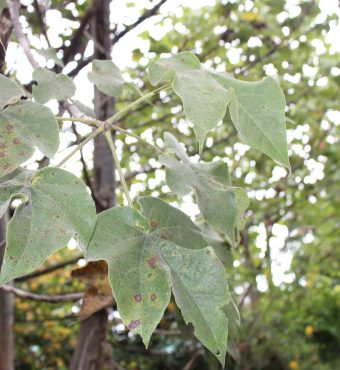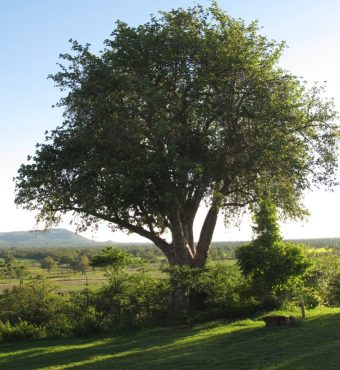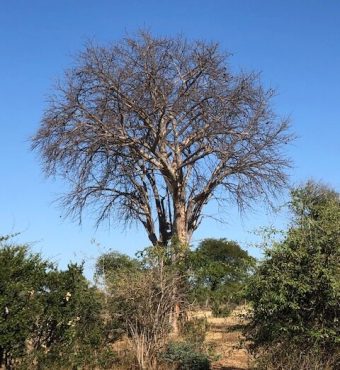


Botanical Name: Sterculia africana
Common Name: False Baobab, Mwemwe, Mlele, Mukosa, Mgoza
Plant Family: Malvaceae (Mallow Family) Sub-family: Sterculioideae
Growth Form, Habitat and Distribution: A medium-sized, stout stemmed, deciduous tree, branching from nodes and curved upwards, of low to medium altitude in rocky plateau escarpments, dry thicket, limestone outcrops and termite mounds in many woodland types, except the Kalahari woodland biome in western Zambia and in the Luapula Province.
Size: Height 5 to 12m, spread 6 to 10m.
Bark: Smooth, silver-white, or greenish with a reddish coating peeling or flaking to reveal a pale cream under bark. Produces a brown gum similar to gum tragacanth.
Leaves: Digitate, clustered at branch ends, circular to 3 to 5-lobed (6 to 15cm), olive green, furry, 7-veined from the base. Petiole up to 10cm. Leaves appearing with the rains and falling from May to July.
Flowers: Compact, terminal panicles (9cm), greenish-yellow with red veining (up to 2.5cm), appearing before the new leaves.
Fruit: Up to 5 boat-shaped, beaked, woody capsules, golden velvet up to 15cm, splitting down one side surrounded by intensely irritant hairs, revealing several attractive blue-black tick-like seeds, quickly attacked by Dysdercus beetles once on the ground.
Uses: The bark is used for nets and mats. The seeds are favoured by hornbills. Makes a garden specimen tree where space permits.
